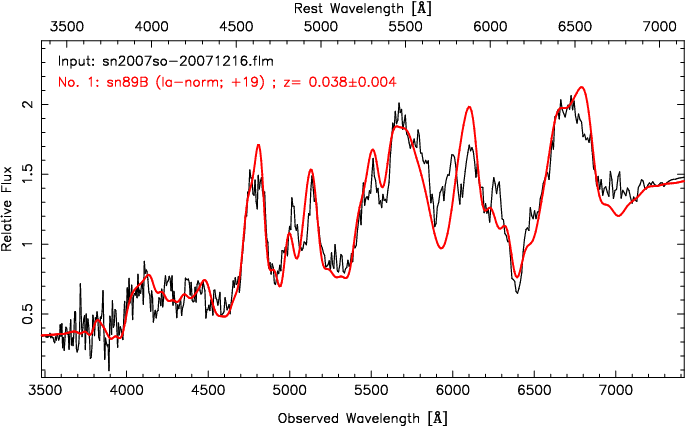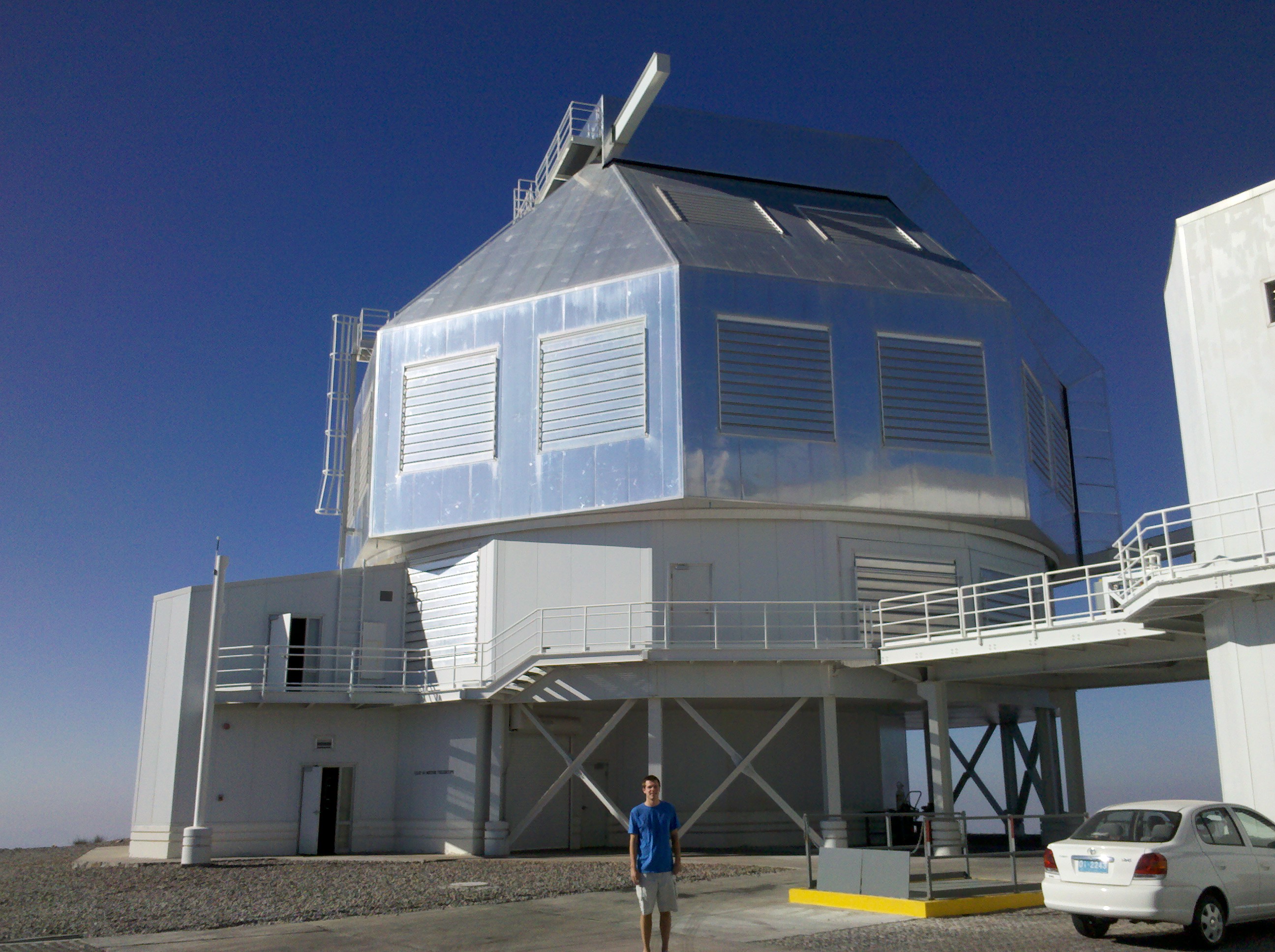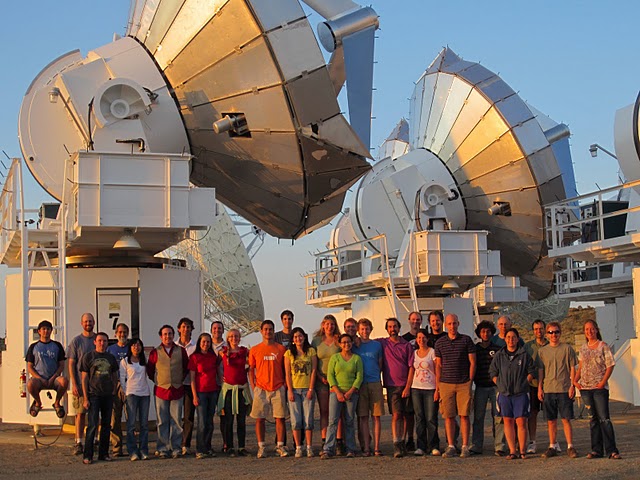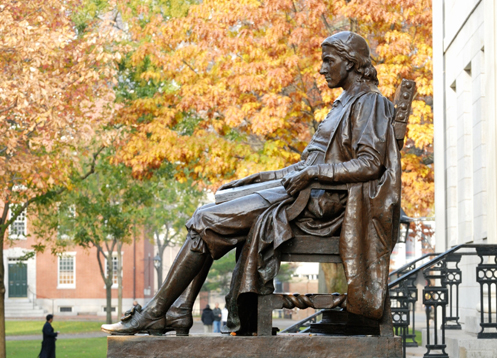This past week, I traveled with Ryan Chornock, a post-doctoral scholar at Harvard University, to northern Chile to observe at the Landon Clay 6.5m telescope , one of the pair of the Magellan Telescopes at Las Campanas Observatory (Figure 1). For two nights, we observed supernovae candidates found by the Pan-STARRS survey and gamma ray burst (GRB) host galaxies. In my previous post, I quoted Mark McKinnon’s statement about the four main astronomical measurements that can be made. On this observing trip, we measured all of these fundamental properties (except polarization) by using imaging, photometry, and spectroscopy. To first order, taking astronomical images with a large telescope is analogous to taking a very long exposure with a digital camera, with typical integration times on the order of minutes for our objects. Photometry is the method of precisely measuring the flux of an object. This is done by taking images through precisely calibrated filters that only allow a certain range of wavelengths of light to pass through. This way, observations can be standardized amongst different telescopes. Spectrographs work by dispersing the light into its various wavelengths, which can then be studied in detail to determine composition, velocity, and much more that cannot be determined from photometry alone (Figure 2). I once overheard another astronomer say that “A picture is worth a 1,000 words, but a spectrum is worth a 1,000 pictures.”

Figure 2: A spectrum of a Type Ia supernova. The flux is on the y-axis and the wavelength is along the x-axis. This spectrum shows strong Silicon absorption lines. Spectroscopy is useful to determine the composition of a source.
Time-domain astronomy, or the sub-field dedicated to discovering transient astronomical events, is not new; however, it is poised to become a major part of astronomy in the 21st century thanks to current and future survey telescopes such as Pan-STARRS, the Palomar Transient Factory, and the Large Synoptic Survey Telescope (LSST). These surveys image the same portion of the sky at a high cadence; for Pan-STARRS, it is every four nights. By comparing the images of successive nights, we can detect transient objects. As part of my research with Professor Edo Berger, I will be performing follow-up observations of these transient objects. For supernovae, this entails obtaining accurate photometric and spectroscopic observations so that we may create a description of the object’s brightness over time (called a light curve) and determine the composition and expansion velocity of the object.
The twin 6.5 meter diameter Magellan telescopes, the Landon Clay and the Walter Baade, were respectively completed in 2002 and 2000 and are for all intents and purposes identical. The telescopes support a host of instruments such as specialized imagers and spectrographs that can be used for specific types of science. For our observations, we used the Low Dispersion Survey Spectrograph (LDSS-3).
Different observatories typically have their own unique observer interface. The Magellan telescopes are large enough that they require a separate trained telescope operator to control the movements of the telescope and to make sure it is guiding accurately. Fortunately, this allows the observers themselves to concentrate on setting up science exposures and running the instrument (in our case, a spectrograph). The software interface for LDSS-3 is the ubiquitous IRAF, a program created by NOAO in the 1980’s that has become a staple of astronomical data processing.
While Ryan is already an experienced observer, our two nights at the Clay telescope were my first observing run at a large optical observatory. I was amazed at how quiet and serene the mountaintop observatory is. Chile is fast becoming the home to the world’s largest observatories . Thanks to the conspiring geography of the Humboldt current and the Andes mountains, much of the northern half of Chile is extremely arid, which makes for excellent observing conditions from the optical (such as the Magellan Telescopes) to the sub-millimeter and the radio. For example, the Atacama Large Millimeter Array (ALMA), a massive collaboration between the National Radio Astronomy Observatory (NRAO), the European Southern Observatory (ESO), and the National Astronomical Observatory of Japan (NAOJ), is nearing completion in the Atacama Desert near San Pedro de Atacama, Chile.
The two nights of observing went very well. Part of the thrill of observing transient objects is being the first astronomer to study them in detail. One never knows what one may find upon closer inspection. During the first night, we received an alert that a new gamma ray burst (GRB) had just been found by the Swift satellite. Normally, we would immediately shelve the current observation and concentrate on this new target, since GRBs are rare enough and fade fast enough that quality, early observations of them are extremely important for their understanding. Unfortunately, this particular GRB was on the other side of the celestial sphere, and thus would only be above the horizon during the day. On the second night, one of the objects we studied proved to be an ultra-luminous supernova, and so we re-shuffled our observing queue to include additional observations of this object while shelving observations of other targets. Las Campanas Observatory plays an important role in the history of supernova, since it was where Supernova 1987A was first discovered by Ian Shelton and Oscar Duhalde. SN1987A is important because it is the closest supernova ever discovered since the advent of modern astronomical equipment in the 20th century. The study of this object has contributed greatly to what astronomers currently know about core-collapse supernovae. I was fortunate enough to meet Oscar while I was staying at the observatory.
After our two nights of observing were over, I explored the future site of the 25 meter Giant Magellan Telescope with Polish astronomer Pawel Pietrukowicz. A new release on the arXiv details the extensive testing that is behind the selection of the Cerro Las Campanas site.
Have you been on an observing run before? Are you an avid amateur astronomer? Please share any of your observing stories in the comments!






I really admire what you are doing. If I could ask a question that would set me up as particularly noob-ish. Since this site that you were using was the home for such an important discovery in the history of studying supernovae – what do you imagine the next important discovery would be? Are there any theories that would shake the foundation of our knowledge that can be discovered and observed at an earth station? What theories are on deck that just await viewable evidence?
Hi Richard!
Observations of supernovae have recently played a large part in “shaking up” our understanding of the universe. The prime use of observations of Type Ia supernovae (which have a calibrate-able brightness, and thus serve as “standard candles“) has been for cosmological applications. One of the most revolutionary discoveries of the past 20 years is that the universe is not only expanding (like Edwin Hubble determined), but the rate of expansion is actually accelerating. If the only force acting on matter in the universe were gravity, we would expect the rate of expansion to decelerate, and if there were enough matter in the universe, then the universe would collapse upon itself in a “big crunch.” This observed acceleration of the universe is at the heart of the debate about “dark energy,” or the source of energy that is driving the expansion of the universe.
In terms of actual supernovae themselves, more and more exotic core-collapse supernovae have been found that break the mold of what is considered a “normal” supernova. In particular, there are recent observations of transients purported to be pair-instability supernovae, which would only form from very massive (greater than 140 solar masses) early stars (called Population III). Until recently these pair-instability supernovae have only existed in theory. Check out this recent Nature article for more information on the discovery (you can click on the arXiv e-print link if you do not have access to the Nature journal via a university).
Thanks for the comment!
Ian,
Wonderful article with a great description of what you did for your two nights of observing and your scientific purpose behind it. As an avid amateur astronomer, I can relate in getting ready for a night or two nights out but I end up only going to the dark skies out here in Utah. In terms of scientific contributions I can only state that I contribute through AAVSO and perhaps in using visual magnitude when I can with SN’s, using a 14″ or a 20″ dob. I need to get around to setting up a SCT so that I can get into the scientific portion of amateur astronomy more often. Probably after my senior and junior are done with college themselves. Keep up the great work and I posted about your article and astrobites in my own blog. Please keep posing!
Hi Jay!
Thanks a lot for the comment and the press on your blog! It must be nice to have such dark skies like Utah readily accessible for a weekend observing trip. I wish Boston and the suburbs were less light-polluted. It’s really great to hear that you contribute to AAVSO, the amateur community often provides invaluable information for the study of supernovae, novae, and other transients.
Best of luck observing,
Ian